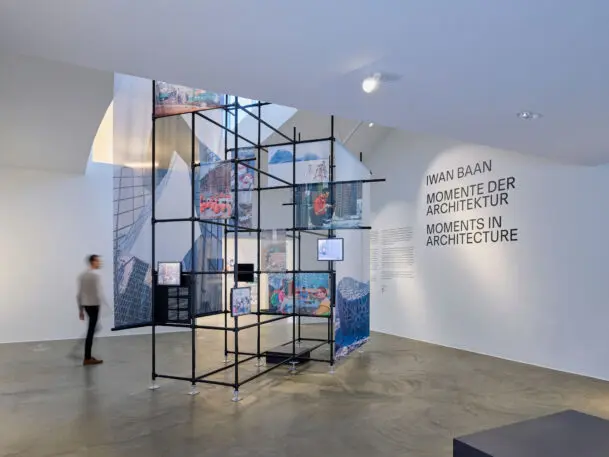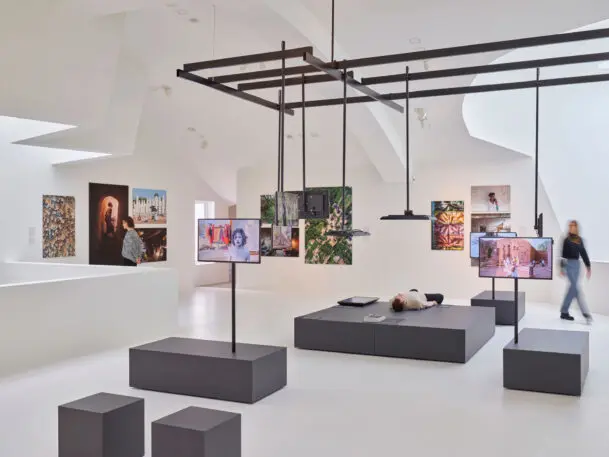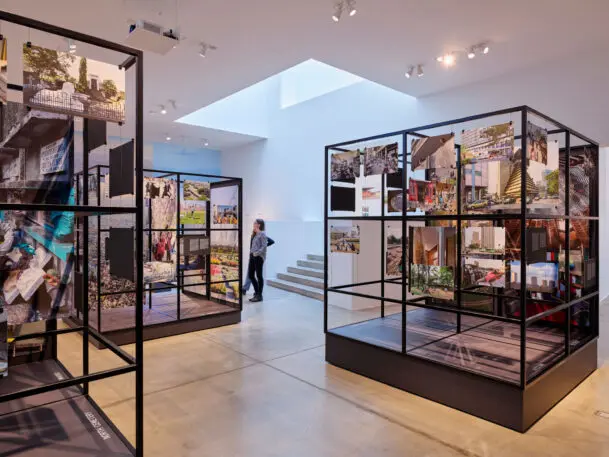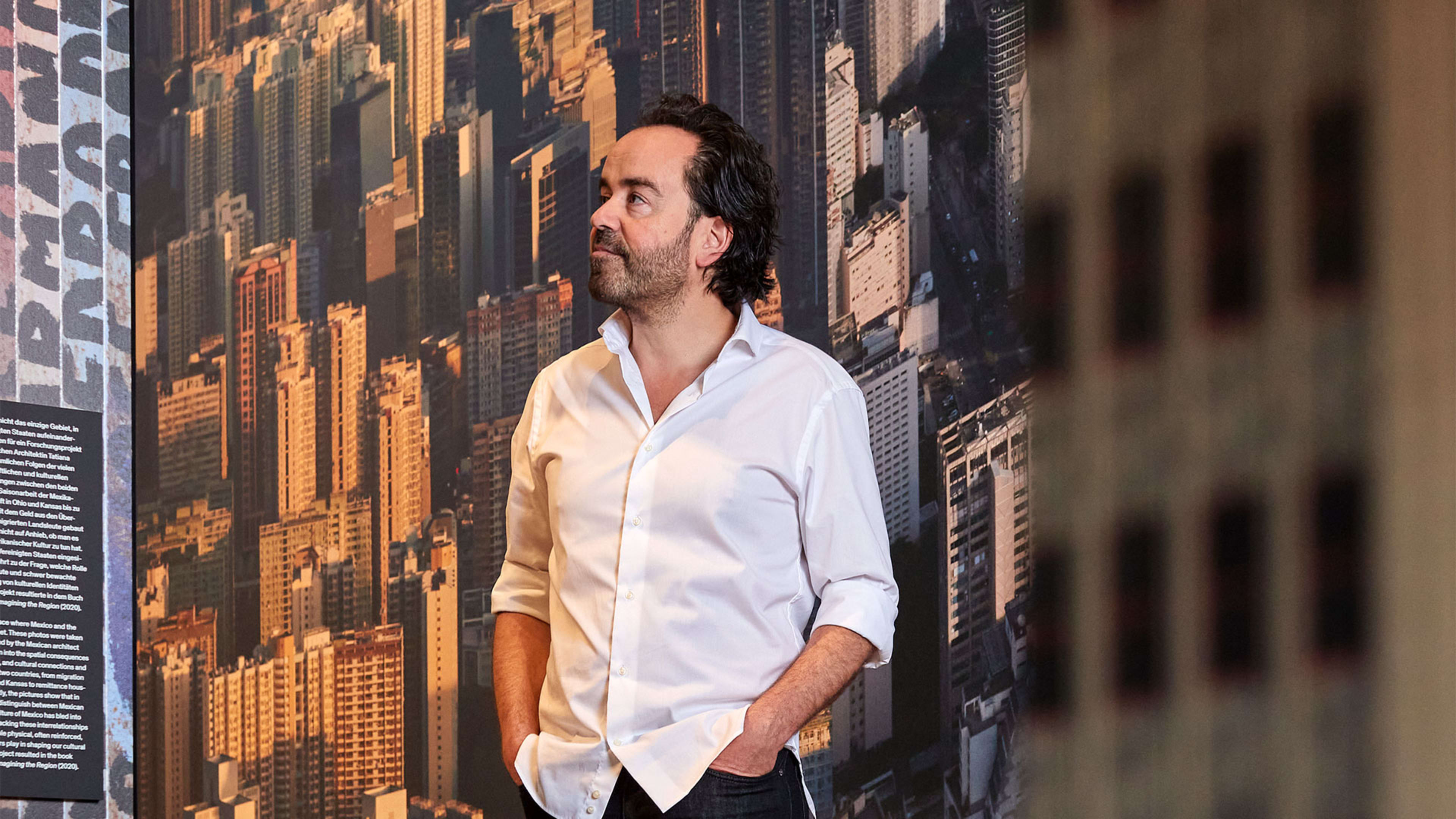“I don’t have any architectural background,” says Iwan Baan, perhaps the most celebrated architectural photographer working today. For someone who has documented the buildings of some of the world’s most significant architects—including OMA, Herzog & de Meuron, Francis Kéré, and Zaha Hadid—Baan has spent the past 20 years defining the look of an insular field from the perch of a curious outsider.
This curiosity, and sometimes distance, is on full display in Baan’s first major career retrospective, Moments in Architecture, now open at the Vitra Design Museum in Weil am Rhein, Germany. Filling the museum, it features roughly 1,000 of his photographs from the last two decades. Ostensibly a show about architectural photography, it reveals in great detail how Baan has built a career around showing not just the nice angle of the pretty building, but how a building was designed, built, and fits into its surroundings.
“I’ve been photographing the same since I was 12 years old,” says Baan, now 48. “It’s transmitting visual stories from one place to a new audience.”
These visual stories over the past 20 years have ranged wildly, from the massive Bird’s Nest stadium built in Beijing for the 2008 Summer Olympics to the informal settlements of Burkina Faso to the towering oil infrastructure of Baku, Azerbaijian. Buildings are the recurring theme.

Baan came to architectural photography unintentionally. He had been doing some work in China and crossed paths with renowned architect and fellow Dutchman Rem Koolhaas in 2004. Koolhaas’s firm, OMA, was a few years into its work creating the bombastically looped CCTV headquarters building in Beijing, and commissioned Baan to follow along as it got built. “From one day to another [that] catapulted me into the architectural field, a little bit by coincidence and unplanned,” Baan says.
He met other architects working in China during a time of hyperspeed building and urbanization, and snagged more commissioned work from designers big and small. Rather than just showing the finished buildings, Baan’s work for these first clients also documented the construction process, which was particularly complex for the CCTV building and the woven facade of the Bird’s Nest stadium. These process shots highlighted the buildings’ ingenuity, but also showed the laborers who helped make it possible, often unearthing the candid moments of a tea break between welds, or the humble camps built in the shadow of the construction site. This more comprehensive approach to photography goes far beyond the choice few photos that end up representing a building when it gets covered in publications and on websites.
It also creates a trove of material for an exhibition. Working with Vitra curator Mea Hoffmann to develop Moments in Architecture, Baan initially submitted 14,000 images for consideration. The two worked together for a year to give shape to the show and cull that down to what ended up being about 1,000 images and videos. The exhibition is broken in to four rooms, covering Baan’s early work in China, the sometimes unconventional framing he chooses for his architectural photography, photos of cities, and the informal and traditional buildings that make up the architecture world beyond the well-known designers and big budgets.

Speaking recently over video call, Hoffmann and Baan explain that they intentionally wanted to avoid turning the show into some “best of” roundup of contemporary architecture, which it could have easily been. The two—who were sitting together in a bathroom at the museum as construction of the exhibition noisily rushed to readiness—seem equally interested in zooming out and showing buildings in their broader context, being used by people.
“It’s really the portrayal of the lived experience as opposed to quote-unquote architectural photography,” Hoffmann says.
“It’s embracing what happens there in that moment,” Baan adds. “Why are people there, what happens there, what is the weather? Trying to embrace anything unplanned. Everything the architect couldn’t control becomes, for me, the most interesting part of it.”
Baan says he’s not trying to create the single iconic or timeless image of a building, but rather a very time-specific view of its existence and context. That can be, he says, “it’s juxtapositions or its weirdness or its newness or the unplanned ways people take it over.”
He calls his work storytelling, and often follows the story of a building beyond what his architect clients may have had in mind. “It’s not just that I’m only photographing all the ‘good’ buildings,” he says. “Sometimes those images are not the ones immediately an architect chooses for their press set. But that’s also the nice thing about making an exhibition like this.”

And it’s why the exhibition includes 1,000 images. Baan says it was important to include such a wide variety of project and place types because it helps tell a bigger story about the role of architecture in society. There’s a universality to how architecture is designed and used, even when it’s happening in dramatically different circumstance.
“For me, it doesn’t matter so much if I’m shooting for Herzog & de Meuron or for somebody who built his own space out of pure necessity. Photography is just this vehicle for my curiosity to see that full breadth of the built environment and how people live and create spaces all around the world,” he says. “One part is my bread and butter, but it all comes from the same fascination and I look at it the same way.”
Recognize your brand’s excellence by applying to this year’s Brands That Matter Awards before the early-rate deadline, May 3.
